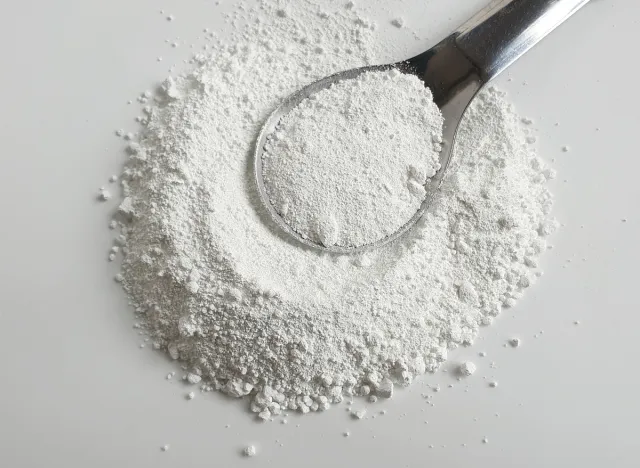
10 月 . 14, 2024 14:14 Back to list
Top Titanium Dioxide Suppliers for High-Quality Industrial Applications and Products
Titanium Dioxide Suppliers An Overview of Industry Dynamics and Market Trends
Titanium dioxide (TiO2) is one of the most widely used white pigments in the world, renowned for its exceptional brightness and opacity. It is primarily utilized in the manufacturing of paints, coatings, plastics, rubber, and even food and cosmetics. Due to its versatile application and essential role in various industries, titanium dioxide has garnered significant attention in recent years, prompting a closer look at its suppliers, market dynamics, and emerging trends.
The Global Titanium Dioxide Market
The global titanium dioxide market is influenced by several factors, including economic growth, technological advancements, and environmental regulations. The pigment industry has seen a consistent rise in demand, particularly in emerging economies, where urbanization and industrialization are accelerating. According to market research, the demand for titanium dioxide is projected to increase significantly in the coming years, driven by the expansion of the paints and coatings sector, which utilizes about 50% of the total TiO2 produced.
Key Players in the Titanium Dioxide Supply Chain
The titanium dioxide supply chain consists of various players, including raw material suppliers, manufacturers, and distributors. Major companies dominating the market include international giants like The Chemours Company, Tronox, Huntsman Corporation, and Kronos Worldwide. These suppliers maintain significant production capacities and often operate versatile plants capable of producing both rutile and anatase forms of titanium dioxide.
The geographical distribution of TiO2 suppliers is notable, with substantial production facilities located in North America, Europe, and Asia-Pacific. China has emerged as a formidable player in the TiO2 market, both as a leading producer and consumer. This dominance has increased competitive pressures for traditional suppliers in North America and Europe, prompting them to innovate and adopt cost-effective production methods.
Ethical Sourcing and Environmental Considerations
As the titanium dioxide market evolves, sustainability and ethical sourcing have become crucial topics of discussion. The environmental impact of TiO2 production has led to intensified scrutiny from governments and consumers alike. The extraction and processing of titanium minerals can result in significant ecological disturbances, raising concerns about water quality, habitat destruction, and air emissions.
r 2196 titanium dioxide supplier

Suppliers are increasingly being held accountable for their environmental practices. Many are adopting greener manufacturing processes, such as reducing waste and emissions, water recycling, and utilizing alternative raw materials. Some companies are obtaining certifications that highlight their commitment to sustainable production, thereby positioning themselves as responsible suppliers in a market that values environmental stewardship.
Technological Innovations in TiO2 Production
Technological advancements have also played a pivotal role in shaping the titanium dioxide market. Innovations in production processes, including various methods for synthesizing TiO2 and enhancements in pigment quality, have allowed suppliers to optimize output and reduce costs. For instance, advancements in nanotechnology are enabling the creation of TiO2 nanoparticles, which boast unique properties and can be used in various high-performance applications, from self-cleaning surfaces to advanced solar technologies.
Moreover, research into alternative sources of titanium, such as ilmenite and slag, is gaining momentum. Suppliers are exploring these options to diversify their raw material bases and mitigate the risks associated with price volatility in the titanium market.
Market Challenges and Opportunities
Despite the positive growth forecast, the titanium dioxide market faces several challenges. The fluctuating prices of raw materials, competition from alternative pigments, and stringent regulatory frameworks can impact the profitability of suppliers. Additionally, the ongoing global discussion surrounding products derived from fossil fuels and their carbon footprints presents a looming challenge for traditional TiO2 producers.
On the flip side, these challenges open up new opportunities for innovation. Suppliers who can pivot towards sustainable practices, harness technological advancements, and expand their product offerings to meet evolving consumer preferences will likely thrive in this competitive landscape.
Conclusion
In conclusion, titanium dioxide suppliers are at a crossroads in an ever-evolving market. The interplay of demand growth, environmental responsibilities, and technological innovations will shape the future of the TiO2 industry. As various stakeholders navigate this dynamic landscape, suppliers who prioritize sustainability, invest in innovative processes, and respond to changing market dynamics will emerge as leaders in the global titanium dioxide market. As industries continue to evolve, the role of titanium dioxide will remain pivotal, embodying the balance between performance and environmental stewardship in the years to come.
-
Lithopone for Plastic & TiO2 R-5568/SK-6658 Masterbatch Solutions
NewsMay.30,2025
-
China Leading Rutile TiO2 Manufacturer - R5566 & R996 Grades Available
NewsMay.30,2025
-
High-Purity Anatase & Rutile TiO2 Powder Trusted Manufacturer
NewsMay.30,2025
-
High-Purity Anatase Products Trusted Supplier & Manufacturer
NewsMay.29,2025
-
Best Price Eco-Friendly Rutile TiO2 Supplier & Wholesale Factory
NewsMay.29,2025
-
Chinese Anatase Titanium Dioxide for Ceramic Glaze Reliable Supplier
NewsMay.29,2025
